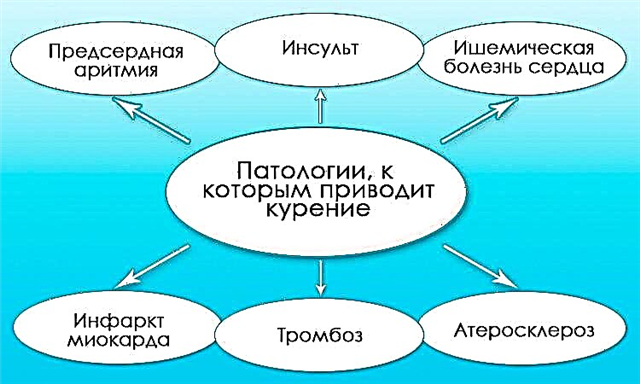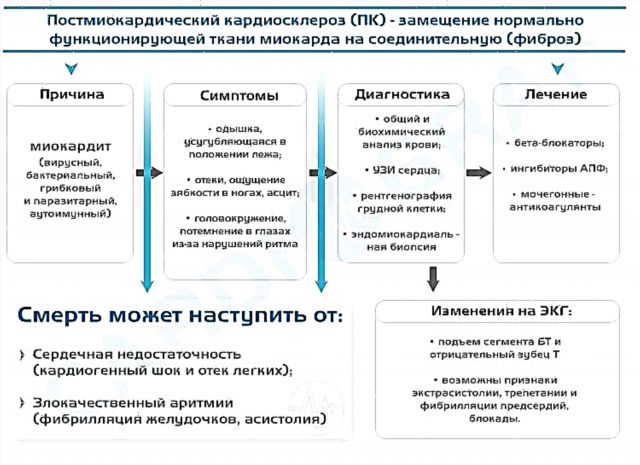What is orthostatic hypotension?
 Orthostatic hypotension is a pathological syndrome characterized by a sudden drop in blood pressure due to a change in body position - rising from horizontal (lying or sitting) to vertical (standing). Directly associated with a decrease in the tone of the veins of the lower extremities.
Orthostatic hypotension is a pathological syndrome characterized by a sudden drop in blood pressure due to a change in body position - rising from horizontal (lying or sitting) to vertical (standing). Directly associated with a decrease in the tone of the veins of the lower extremities.
In this case, under the influence of gravity, blood accumulates in the vessels of the lower extremities. Venous return to the heart, and then the stroke volume, decrease, which leads to a decrease in pressure. Due to this phenomenon, cerebral blood flow is significantly reduced, which explains the symptoms of orthostatic hypotension:
- severe severe weakness;
- flashing flies, foggy and darkening in the eyes;
- dizziness;
- syncope (fainting);
- noise, throbbing in the ears;
- nausea;
- heart palpitations (tachycardia).
With prolonged fainting, due to oxygen starvation of the brain, convulsions, dysfunction of the pelvic organs may appear. Often, due to a fall, a person develops a head injury. In this case, even after the return of consciousness, some symptoms do not disappear (headache, nausea). In patients with ischemic heart disease, orthostatic collapse can provoke an attack of angina pectoris, which is also associated with impaired blood supply to the myocardium.
Externally, on examination, you can find signs such as pallor of the skin, increased sweating. Most often, the condition occurs in the morning, after sleep, during prolonged standing in a stuffy room or in transport in the heat. If a person has lost consciousness, they may experience short-term amnesia.
Depending on the severity and frequency of attacks, three degrees of orthostatic hypotension are distinguished:
- I Art. (mild) - rare episodes with a complete absence of fainting;
- ІІ Art. (moderate) - episodes are more frequent, fainting may occur;
- III Art. (severe) - almost every case ends in loss of consciousness.
If this condition quickly passes and happens only sporadically, this is considered a variant of the norm. This often happens during adolescence, when different organ systems develop unevenly.
However, if this syndrome occurs frequently, the manifestations do not disappear after 1-2 minutes, which may be a sign of pathological disorders in the body.
What are the causes of the condition?
Under physiological conditions, the phenomenon occurs due to a long stay in a supine position, starvation, in high altitude conditions among climbers. Orthostatic collapses often develop during pregnancy, especially in the later stages. After childbirth, the normal state is restored.
As for the pathological causes of orthostatic hypotension, they can be as follows:
| Cardiopathology | Angina pectoris, chronic heart failure, defects of valves and other structures, myocardiopathy, rhythm disturbances |
| Vascular diseases | Atherosclerosis, varicose veins of the lower extremities |
| Endocrine Disorders | Diabetes mellitus, chronic adrenal insufficiency (Addison's disease), hypoglycemia with insulin overdose |
| Neurological pathologies | Autonomic disorders, Parkinson's disease, amyloidosis, spinal cord injuries, metabolic neuropathies, Shay-Drager syndrome |
| Adverse reactions from taking medications | Beta-blockers, Viagra and its analogues, antidepressants, monoamine oxidase inhibitors |
| Postprandial hypotension | Violation of pressure that occurs after eating, especially in old age. |
| Dehydration | As a result of a decrease in water intake, and as a result of an increase in consumption - due to vomiting, diarrhea, hyperhidrosis (increased sweating), blood loss; |
| Idiopathic hypotension | The exact cause cannot be determined |
How to treat?
If you witness an attack of orthostatic hypotension, you must provide the victim with first aid, which is as follows:
- If a person faints, sprinkle him with cold water or use ammonia (only very carefully, for example, moisten a napkin with a few drops of the solution so as not to burn the nasal mucosa).
- When the patient recovers, give him warm tea with sugar.
- If consciousness does not return within one or two minutes, call an ambulance.
 For the treatment of manifestations of orthostatic hypotension, the following medications are used:
For the treatment of manifestations of orthostatic hypotension, the following medications are used:
- psychostimulants (caffeine preparations);
- alpha-adrenergic agonist (midodrin, ethylephrine) - a hypertensive agent with a vasoconstrictor effect;
- mineralocorticoid (hydrocortisone) - increases the volume of circulating blood, constricts peripheral vessels.
- beta-blockers (metoprolol, propranolol) - potentiate the effect of adrenal cortex hormones;
- herbal adaptogens (ginseng, eleutherococcus, lemongrass) - have a general tonic and strengthening effect on the body, increase blood pressure.
Also, specific therapy is used for a specific disease that caused this syndrome.
Prevention of seizures
An important part of the fight against this syndrome is prevention, which greatly reduces the frequency and severity of symptoms.
Doctors advise you to follow these guidelines:
- Avoid sudden changes in body position. In the morning, wake up, lie down for a while, and then slowly get up.
- If bed rest is indicated for you, take measures to combat physical inactivity. Do exercises right in bed, periodically change your position.
- In the presence of varicose veins, it is recommended to use compression bandages on the legs or special underwear;
- Maintain a normal water balance - drink at least 1.5-2 liters of fluid per day. You also need to consume a sufficient amount of salt.
- Walk more in the fresh air, do physical exercises (in particular, aimed at training the muscles of the legs and abdominals).
- Try not to overeat - this also provokes orthostatic collapse.
Does the presence of this condition affect the patient's overall prognosis?
 It should be understood that orthostatic hypertension syndrome is not a separate disease, but usually develops against the background of a particular pathology and will always be an aggravating factor.
It should be understood that orthostatic hypertension syndrome is not a separate disease, but usually develops against the background of a particular pathology and will always be an aggravating factor.
This condition can provoke the development of some dangerous complications. The most common are head injuries due to falls. Another negative consequence can be encephalopathy, which occurs due to prolonged fainting, which can cause irreversible changes in the cerebral cortex, up to dementia (dementia).
With proper treatment and implementation of preventive recommendations, the prognosis in most cases is favorable.
Conclusions
Orthostatic hypotension, despite its seeming harmlessness, can lead to the development of dangerous complications, which, therefore, requires a serious attitude towards itself. If a quick change in body position, in addition to slight dizziness or darkening in the eyes, is also accompanied by fainting, you should immediately consult a doctor for a full examination.
Such a condition may indicate the presence of diseases, such as pathologies of the cardiovascular system or endocrine disorders.



